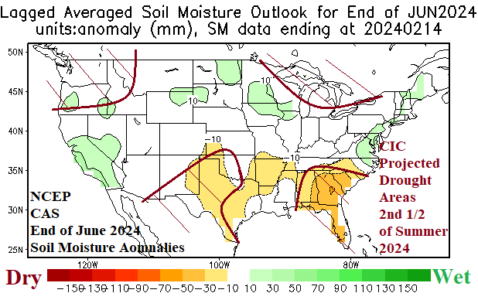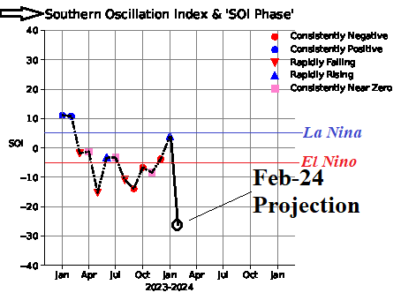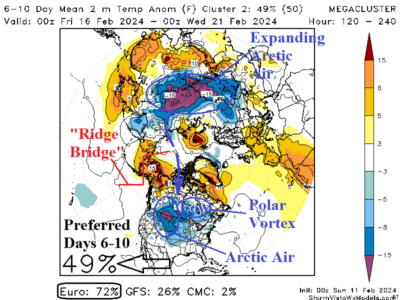02/15/2024, 7:43 pm EST
The Climate Impact Company constructed analog 6-month precipitation forecast for the U.S. coupled with current soil moisture and trend yields the second half of summer U.S. drought risk areas. Most prominent and agreeable to the NOAA CAS forecast is Georgia and Florida followed by Texas. The CIC-CA projection adds the Northwest U.S. and northern Great Lakes. The Midwest U.S. is likely to avoid a 2024 drought.
![Climate-Impact-Company-logo-sm[1]](https://climateimpactcompany.com/wp-content/uploads/2023/08/Climate-Impact-Company-logo-sm1.png)



